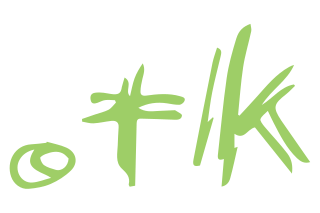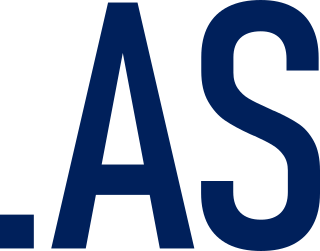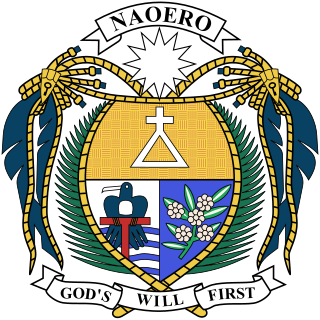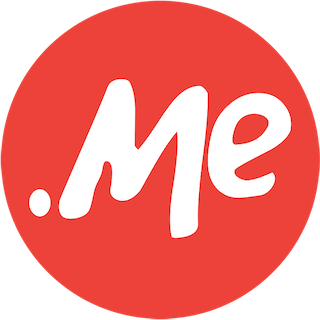
In the Internet, a domain name is a string that identifies a realm of administrative autonomy, authority or control. Domain names are often used to identify services provided through the Internet, such as websites, email services and more. Domain names are used in various networking contexts and for application-specific naming and addressing purposes. In general, a domain name identifies a network domain or an Internet Protocol (IP) resource, such as a personal computer used to access the Internet, or a server computer.

.xxx is a sponsored top-level domain (sTLD) intended as a voluntary option for pornographic sites on the Internet. The sponsoring organization is the International Foundation for Online Responsibility (IFFOR). The registry is operated by ICM Registry LLC. The ICANN Board voted to approve the sTLD on 18 March 2011. It went into operation on 15 April 2011.

.tk is the Internet country code top-level domain (ccTLD) for Tokelau, a territory of New Zealand in the South Pacific.

.nu is the Internet country code top-level domain (ccTLD) assigned to the island state of Niue. It was one of the first ccTLDs to be marketed to the Internet at large as an alternative to the gTLDs .com, .net, and .org. Playing on the phonetic similarity between nu and new in English, and the fact that nu means "now" in several northern European languages, it was promoted as a new TLD with an abundance of good domain names available. The .nu domain is now controlled by the Internet Foundation in Sweden amid opposition from the government of Niue.

.ie is the country code top-level domain (ccTLD) which corresponds with the ISO 3166-1 alpha-2 code for Ireland. The Internet Assigned Numbers Authority (IANA) list the Computing Services Computer Centre of University College Dublin as its sponsoring organisation for the .ie domain. Since 2000 the business of administrating the domain registry has been handled by IE Domain Registry Limited. Domain name registration is open to individuals located in, or with a significant connection with, any part of the island of Ireland.
A country code top-level domain (ccTLD) is an Internet top-level domain generally used or reserved for a country, sovereign state, or dependent territory identified with a country code. All ASCII ccTLD identifiers are two letters long, and all two-letter top-level domains are ccTLDs.
.al is the Internet country code top-level domain (ccTLD) for Albania. It is administered by the Electronic and Postal Communications Authority of Albania (AKEP).

.as is the Internet country code top-level domain (ccTLD) for American Samoa. It is administered by AS Domain Registry. Island Networks, which provides registry services for .gg and .je, is also responsible for the technical operations of .as.
.yu was the Internet country code top-level domain (ccTLD) that was assigned to SFR Yugoslavia in 1989 and was mainly used by Serbia and Montenegro and its two successor states. After Montenegro and Serbia acquired separate .me and .rs domains in 2007, a transition period started, and the .yu domain finally expired in 2010.

.cm is the country code top-level domain (ccTLD) for Cameroon.

.in is the Internet country code top-level domain (ccTLD) for India. It was made available in 1989, four years after original generic top-level domains such as .com, .net and the country code like .us. It is currently administered by the National Internet Exchange of India (NIXI).

.is is the top-level domain for Iceland. The country code is derived from the first two letters of Ísland, which is the Icelandic word for Iceland. Registration of .is domains is open to all people and companies without any special restriction.

.la is the Internet country code top-level domain (ccTLD) for Laos.

.ly is the Internet country code top-level domain (ccTLD) for Libya.

.nr is the Internet country code top-level domain (ccTLD) for Nauru. Domains must be paid, and can be ordered from CenpacNet, Nauru's Internet service provider.
A domain hack is a domain name that suggests a word, phrase, or name when concatenating two or more adjacent levels of that domain. For example, bir.ds and examp.le, using the fictitious country-code domains .ds and .le, suggest the words birds and example respectively. In this context, the word hack denotes a clever trick, not an exploit or break-in.

.rs is the Internet country code top-level domain (ccTLD) for Serbia. The domain name registry that operates it is the Serbian National Internet Domain Registry (RNIDS). The letters rs stand for Republika Srbija/Република Србија.

.me is the Internet country code top-level domain (ccTLD) for Montenegro.
The use of the Internet in Slovenia is widespread. According to official polls in the first quarter of 2008, 58% of citizens between the ages 10 and 74 were internet users, which is above Europe's average. In the same period, 59% of households and 97% of companies with 10 or more employed had internet access. In 2011, 73% of households had internet access, and 67% of households had broadband. As of 2011, 29% of Slovenians had never used the internet.
Country code top-level domains with commercial licenses are Internet country code top-level domain that have adopted a policy for worldwide commercial use.














